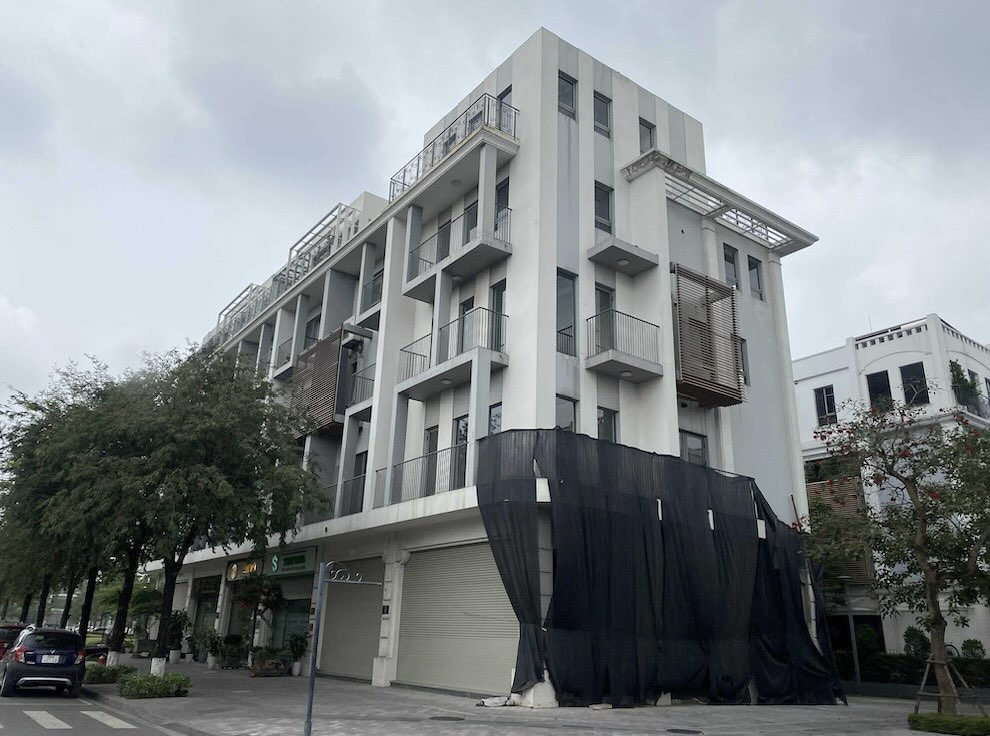Shophouses are abandoned, hanging for rent signs everywhere
A survey of many large urban areas in Hanoi such as Him Lam Van Phuc (Ha Dong district), Tay Ho Tay, Nam An Khanh, Hoai Duc... shows that a series of shophouses with prime locations, spacious frontages but are still in a state of "closed doors and bolts", hanging up signs for rent for many consecutive months.
In Him Lam Van Phuc urban area, many shophouses are being offered for sale at prices ranging from 18 - 30 billion VND/unit, equivalent to about 240 - 300 million VND/m2. However, the completed rental price is only about 50 - 55 million VND/month, not yet completed about 25 - 30 million VND/month.
Mr. Nguyen Van Tuan - the owner of a shophouse shared: "In 2020, I bought a shophouse here for 15 billion VND, now renting it for 20 million VND/month but I am very picky about customers, while the monthly interest still has to be paid evenly".
A similar situation also occurs in Tay Ho Tay urban area, where many shophouses have beautiful frontage but are still empty. Ms. Nguyen Thi Hoa - owner of a shophouse - said: "Although I own a house with a prime location, there are very few tenants in this area, partly due to high rental prices, partly because there are not many office buildings and apartments".
Low rental profits, unstable business efficiency
Sharing with Lao Dong reporter, Savills Vietnam said that in the first quarter of 2025, the average primary price of shophouses in Hanoi reached about 278 million VND/m2, down slightly by 12% compared to the previous quarter but stable compared to the same period in 2024.
Meanwhile, secondary prices increased by 9% quarter-on-quarter, to VND266 million/m2, showing that holding demand is still present. However, the rental rate and business efficiency of this product are not commensurate with price developments.
Ms. Do Thu Hang - Senior Director, Consulting and Research Department of Savills Hanoi - commented: "Although designed as a dual space for both living and business, the shophouse has not been able to achieve the expected efficiency. The occupancy rate in many projects, especially in areas outside the center of Hanoi, is still low due to the lack of synchronous operating infrastructure".
Three bottlenecks make shophouses not exploit effectively
Firstly, competition from modern shopping malls, with professional operating models, diverse amenities and stable rental policies is causing shophouses to gradually lose their appeal to retail and F&B brands.
Second, the rental model of many shophouses is not flexible. Having to rent a whole house while only using the ground floor makes the rental cost exceed actual needs. In addition, the use of shared walkways and sidewalks with homeowners makes brands afraid.
Third, the shophouse operation process is unprofessional. Unlike shopping malls with management units that support legal procedures to technical operations, shophouse tenants often have to take care of themselves or depend on the homeowner, making it difficult for business operations to be properly organized.

To invest effectively, Savills experts recommend that investors should choose products with beautiful locations, clear legal documents, reputable investors and optimal designs.
A minimum frontage of 5m, flexible design, separate walkways between homeowners and tenants, and a technical system suitable for the F&B industry are important criteria to attract tenants. At the same time, investors need to carefully check the legality from land allocation decisions, construction permits to commitments to issue red books after fulfilling financial obligations.
Ms. Hang emphasized: Investing in shophouses today is not only about choosing products but also choosing the right operating model. If investors only expect price increases but ignore the practical exploitation factor, they may face long-term worries.









